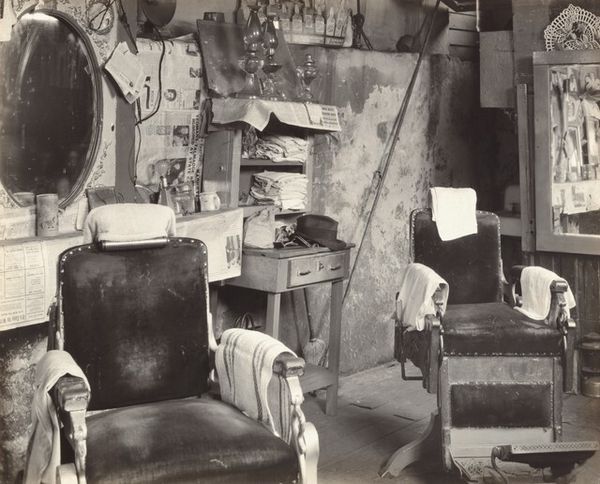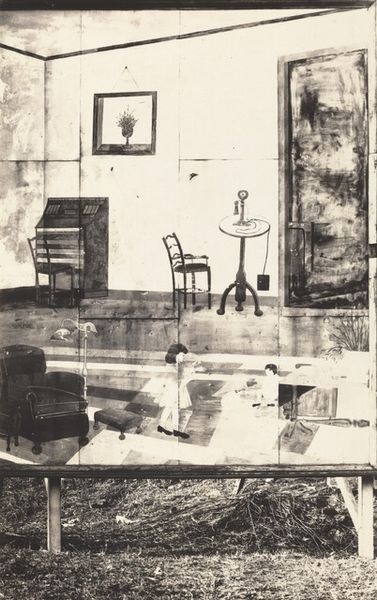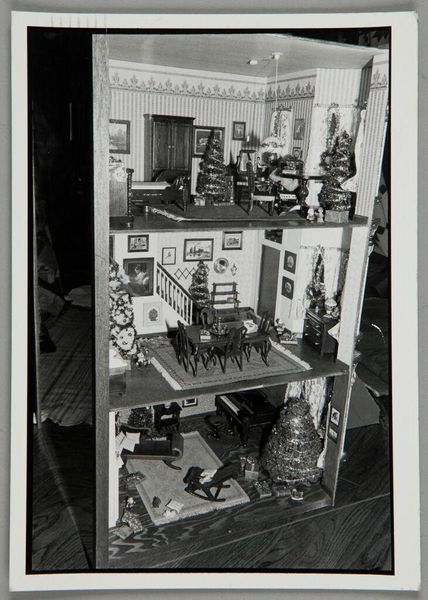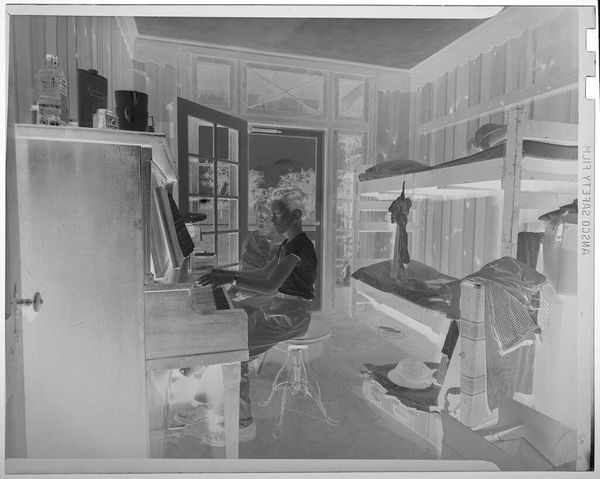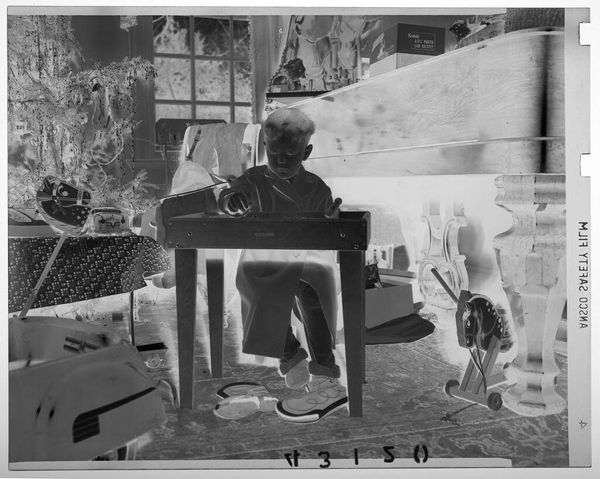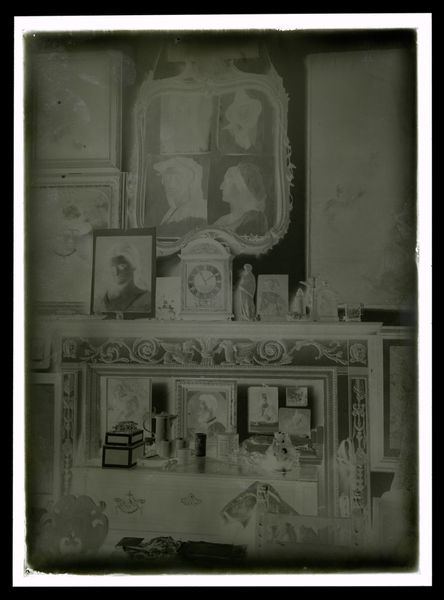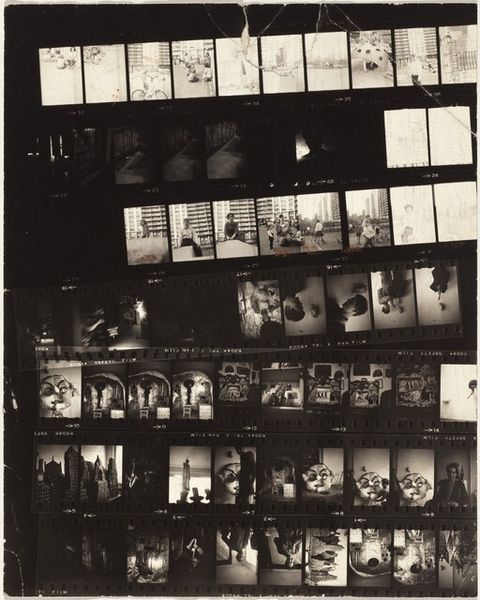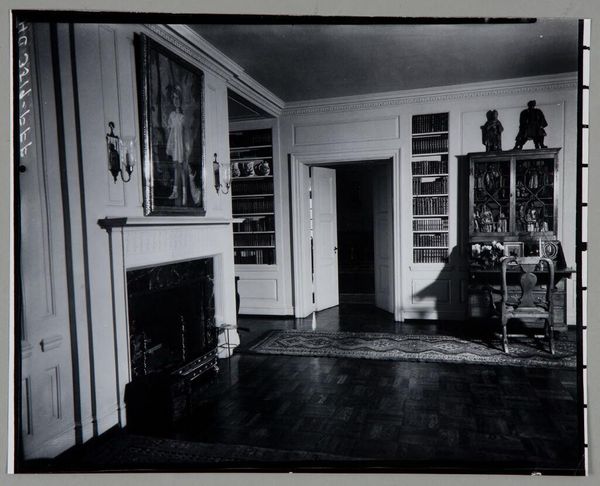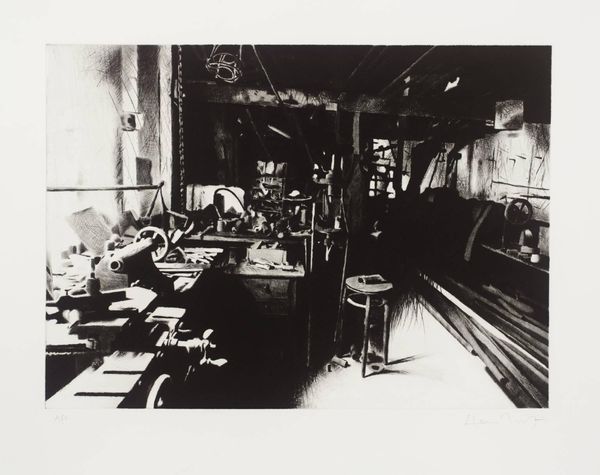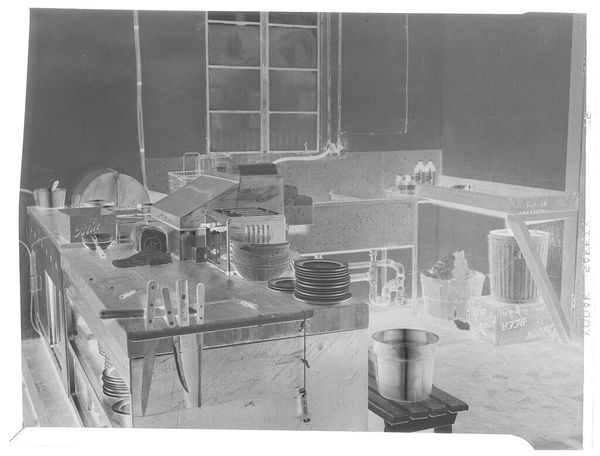
gelatin-silver-print, photography, gelatin-silver-print
#
portrait
#
gelatin-silver-print
#
street-photography
#
photography
#
gelatin-silver-print
#
ashcan-school
#
united-states
#
cityscape
#
genre-painting
#
realism
Dimensions: 7 5/8 x 9 5/8 in. (19.37 x 24.45 cm) (image)7 15/16 x 9 15/16 in. (20.16 x 25.24 cm) (sheet)14 7/8 x 18 7/8 x 1 1/2 in. (37.78 x 47.94 x 3.81 cm) (outer frame)
Copyright: No Copyright - United States
Editor: This gelatin-silver print, "Negroes' Barber Shop" by Walker Evans, dating from 1936, presents quite a study of interior space. The textures and light in this image create a palpable sense of quiet. What do you see when you look at this piece? Curator: The composition is remarkably structured, despite its seemingly haphazard subject matter. Evans uses the geometry of the barber chairs, mirrors, and rectangular shelves to create a series of planes. Notice how the tonal range, from the deep blacks of the chair to the bright whites of the towels, creates depth. Editor: So, it’s about the contrast? I mean, the subject is interesting, but you're focused on how the grayscale contributes? Curator: Precisely. The photograph resists easy narrative. We aren't necessarily invited to consider the lives of the shop's patrons, but to analyze the photographer's compositional choices, his use of light and shadow to define forms and volumes within the constrained space. What purpose do you believe this limited palette serves? Editor: It simplifies things... focuses my attention. It makes me see the details more sharply than I would if it were in color. Curator: Consider, then, the contrast between the highly detailed foreground and the rather blurry background, with all of its various items in the back. What does it communicate to the viewer? Editor: Hmmm, well, the sharp focus on the chairs could imply they are the focal point, or central to understanding the barbershop... like they are figures in a very unconventional portrait. Curator: Indeed. Paying attention to Evans' deliberate manipulation of formal elements allows us to move beyond simple documentation. It is through that technique, he transforms an everyday scene into a compelling piece of art. Editor: I never thought about it that way before! Seeing how formal elements construct the image's meaning definitely offers a new lens.
Comments
No comments
Be the first to comment and join the conversation on the ultimate creative platform.
